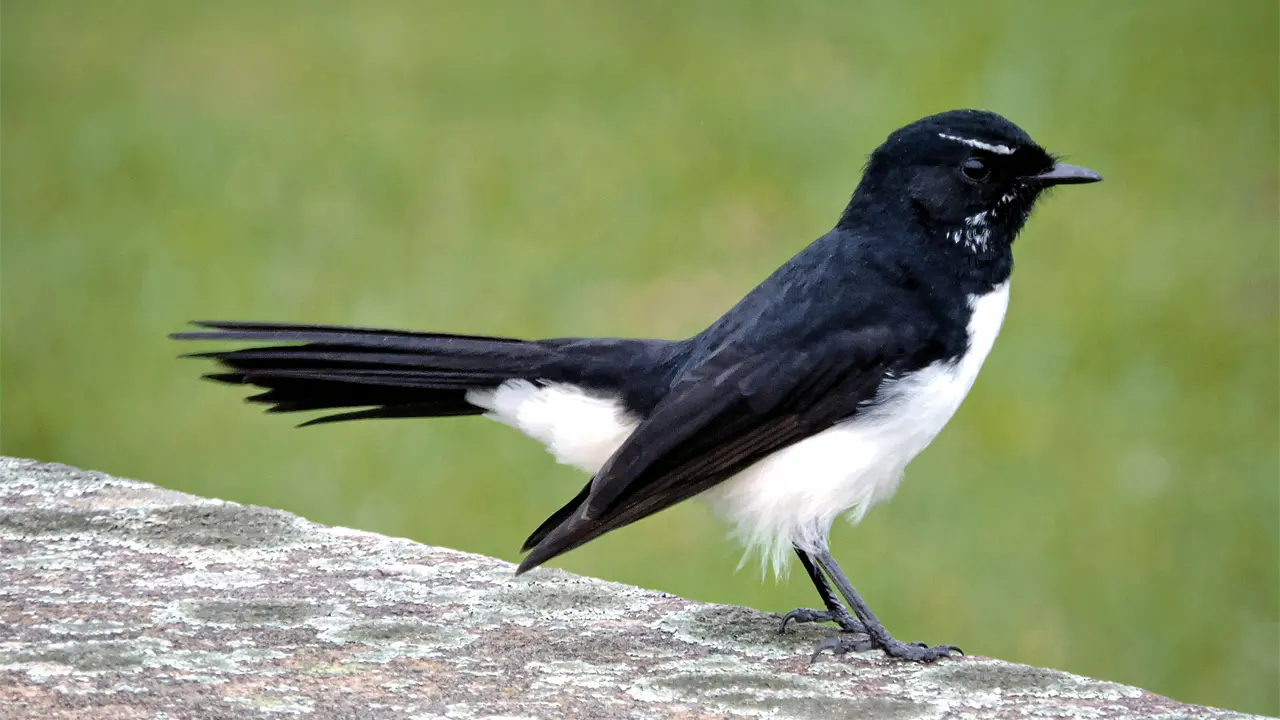Willie wagtails are a familiar sight across Australia, but there is still much we can learn about them.
Story Kate Newsome Photo iStock
The namesake tail swings the bird’s body from side to side. It flits between fence posts and spindly branches, balancing on cattle backs or picking insects off an eastern grey kangaroo. Signature white ‘eyebrow’ markings put a look on its face that fits the reputation: fierce and stubborn and not at all one to act like they’re, at most, about 20g and 20cm long.
“I tried for years – I was trying to get the perfect photo of willie wagtails,” consultant anthropologist Dr Philip Clarke says. “It’s very hard cause they’re just constantly moving.”
Philip has gained over 4 decades of fieldwork experience across Australia since his initial undergraduate studies in biology. He records numerous accounts of willie wagtails, or ritjaruki – one of their Aboriginal names – which evokes the sound of their chitter-chatter birdsong.
While names and exact beliefs about willie wagtails do vary between regions, some things are consistent wherever the birds are native (Australia and its surrounding islands; Papua New Guinea, the Solomon Islands and more easterly parts of Indonesia). “It is a bird that is both feared and admired,” Philip says. He hypothesises willie wagtail’s robust and pushy nature might be what’s led to its prominence in folklore. Europeans took to calling them ‘shepherds’ companions’ while Australian Aboriginal beliefs place them on a par with people, in terms of being sentient – “having a spirit”.
This story excerpt is from Issue #156
Outback Magazine: August/September 2024









